In today’s automotive world, reliability is as much a currency as style, performance, or price. Whether you’re buying your first car, upgrading to a family SUV, or investing in a luxury sedan, one factor silently shapes your ownership experience more than any other: the vehicle’s track record with recalls.
Recalls are not merely inconvenient disruptions; they can be costly, time-consuming, and sometimes even dangerous. A recall means a defect or safety issue severe enough to compel the manufacturer to bring vehicles back to dealerships for repairs, often at no cost to the owner.
While recalls are a critical part of the automotive industry’s quality control and consumer protection, not all vehicles are created equal when it comes to their vulnerability to these widespread fixes.
Understanding which cars tend to avoid recalls and which seem to be on the list year after year reveals much about automakers’ priorities, engineering philosophies, manufacturing quality, and corporate accountability.
Some brands invest heavily in rigorous pre-production testing, incremental innovation, and quality control systems that catch defects before they reach customers.
These manufacturers produce models with well-earned reputations for dependability and peace of mind. On the other hand, certain vehicles — often due to rushed development, complex electronics, cost-cutting, or supplier issues — frequently end up plagued by recall notices, frustrating owners and creating headaches for dealerships.
The recall experience impacts far more than just convenience. Safety is paramount: many recalls address potentially life-threatening defects such as faulty airbags, brake failures, engine fires, or electronic malfunctions that can impair steering or acceleration.
Beyond safety, recalls erode resale value, increase insurance costs, and foster a general sense of unease among owners. This is why savvy buyers consider recall history a crucial data point during the purchasing process.
In this article, we delve into two sides of this coin. First, we’ll highlight five cars known for their rock-solid engineering and exceptional track records — models that, by design and manufacturing discipline, avoid the annoying and costly cycle of frequent recalls.
These vehicles represent brands that consistently put reliability front and center, ensuring owners experience fewer unexpected trips to the repair shop and more confidence behind the wheel.
Next, we’ll turn to the other end of the spectrum: five vehicles that seem perpetually caught in the recall cycle. These models — often mass-market favorites or prestige vehicles — suffer from systemic issues that make them frequent recall targets.
Whether due to complex electronics, rushed production timelines, supplier shortcomings, or design flaws, these cars test the patience of their owners and highlight the challenges automakers face in balancing innovation with reliability.
Exploring these contrasting lists offers valuable lessons. For consumers, it sheds light on what to look for when choosing a car and what to expect from certain brands or models.
For the industry, it underscores the importance of investing in quality assurance, thorough testing, and responsive recall management. For enthusiasts, it reveals how engineering philosophies impact long-term ownership satisfaction.
Ultimately, reliability and recall history are about trust. When you buy a vehicle, you’re trusting that it will keep you safe, perform as promised, and not burden you with surprise repairs.
By understanding which cars have earned that trust — and which have struggled to maintain it — buyers can make more informed decisions, and automakers can better appreciate the price of cutting corners.
In the pages that follow, we’ll dissect the characteristics that separate the recall-free from the recall-prone, offering insight into a critical yet sometimes overlooked aspect of automotive ownership.
Also Read: 5 Cars With Great Warranty Support in the U.S. and 5 That Leave You on Your Own
5 Cars That Avoid Annoying Recalls
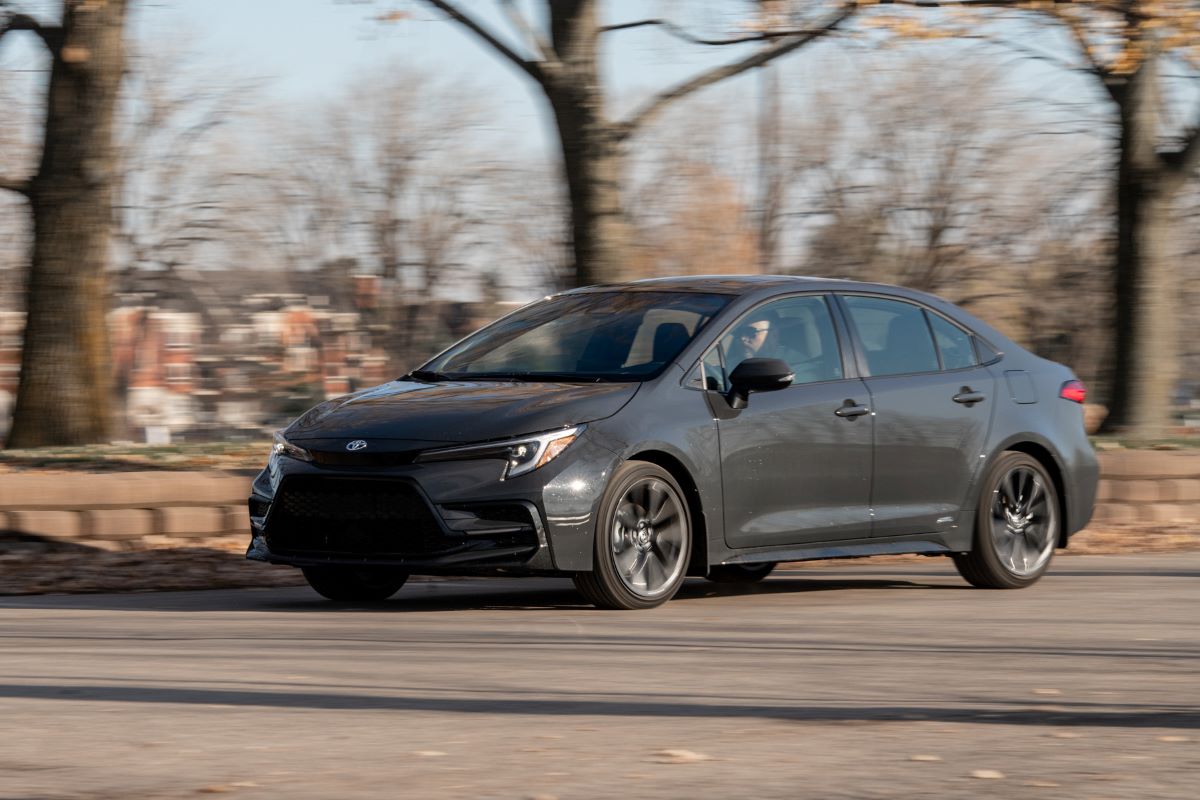
1. Toyota Corolla
Few cars embody reliability like the Toyota Corolla. Spanning more than five decades of continuous production, the Corolla has been engineered with simplicity and durability at its core.
Toyota’s approach to the Corolla isn’t about reinventing the wheel every generation — it’s about refining a proven platform.
Its powertrain, chassis, and interior components are all designed with longevity and consistency in mind, and that shows in the vehicle’s track record. The parts are often carried over with minimal modification between model years, which helps eliminate unexpected issues and makes recalls extremely rare.
One of the reasons the Corolla avoids recalls is Toyota’s strict pre-production testing. Vehicles are subjected to punishing durability tests before ever reaching consumers. Simulations for wear, heat, cold, vibration, and aging are carried out to expose any design flaws early in the development cycle.
This proactive approach prevents systemic issues from making it to market in the first place. Toyota doesn’t rush innovation — it introduces new features only when they’re mature and reliable, unlike some competitors who pack in bleeding-edge tech that isn’t always ready for primetime.
The Corolla also benefits from being one of Toyota’s global products. That means every part of the car — from its engine to its electronics — has to meet safety and reliability standards in dozens of countries.
This encourages conservative, fail-safe design choices. Airbags, sensors, ECUs, and braking systems are engineered with extra layers of redundancy, and Toyota maintains robust quality control protocols at its manufacturing plants around the world. This multilayered reliability strategy means fewer recalls, fewer defects, and more peace of mind for owners.
Over the years, Corolla owners have come to expect a worry-free experience. Whether used as a first car, a family commuter, or a fleet vehicle, the Corolla rarely lets people down. It’s not just reliable — it’s consistent.
You don’t hear horror stories of dashboard fires, mass recalls, or unexpected mechanical failures. Instead, you hear about cars reaching 250,000 miles with minimal drama. It’s a model of how quality-focused design can keep a car — and its owners — off the recall list.

2. Honda CR-V
The Honda CR-V has become one of the best-selling SUVs in the world — and it’s no accident. Its combination of practicality, thoughtful design, and bulletproof reliability makes it a favorite among families and solo drivers alike. But perhaps its most underrated quality is how rarely it shows up in recall news.
Honda’s engineering process for the CR-V emphasizes real-world durability, resulting in an SUV that doesn’t just perform well new — it keeps performing, recall-free, for years.
Part of what makes the CR-V so solid is Honda’s platform-sharing strategy. Rather than reinvent every component for each model, Honda borrows tried-and-true systems across its lineup.
The CR-V uses variants of Honda’s reliable four-cylinder engines and continuously variable transmissions (CVTs), which have been extensively tested in other models before being adapted for SUV duty. This limits the introduction of new variables, a major contributor to mechanical and electronic recalls in other brands.
Honda also pays close attention to ergonomics and user experience. The CR-V’s systems are designed to be intuitive and durable, with physical controls that rarely fail and interior components that can take abuse. Climate systems, infotainment units, and electrical components are less likely to glitch or short because Honda simplifies them rather than overcomplicates them.
In addition, recalls that do occur, such as those related to the Takata airbag scandal, were industry-wide and not a reflection of Honda’s core engineering discipline.
CR-V owners frequently cite the car’s peace of mind as a major reason for brand loyalty. The lack of headaches over time — no alarming warning lights, no mysterious electronic gremlins — means fewer trips to the dealership, less time spent dealing with warranty claims, and a more confident ownership experience.
It’s the kind of car you can hand down to a family member or keep for a decade without worry, which is a rarity in today’s recall-ridden SUV landscape.
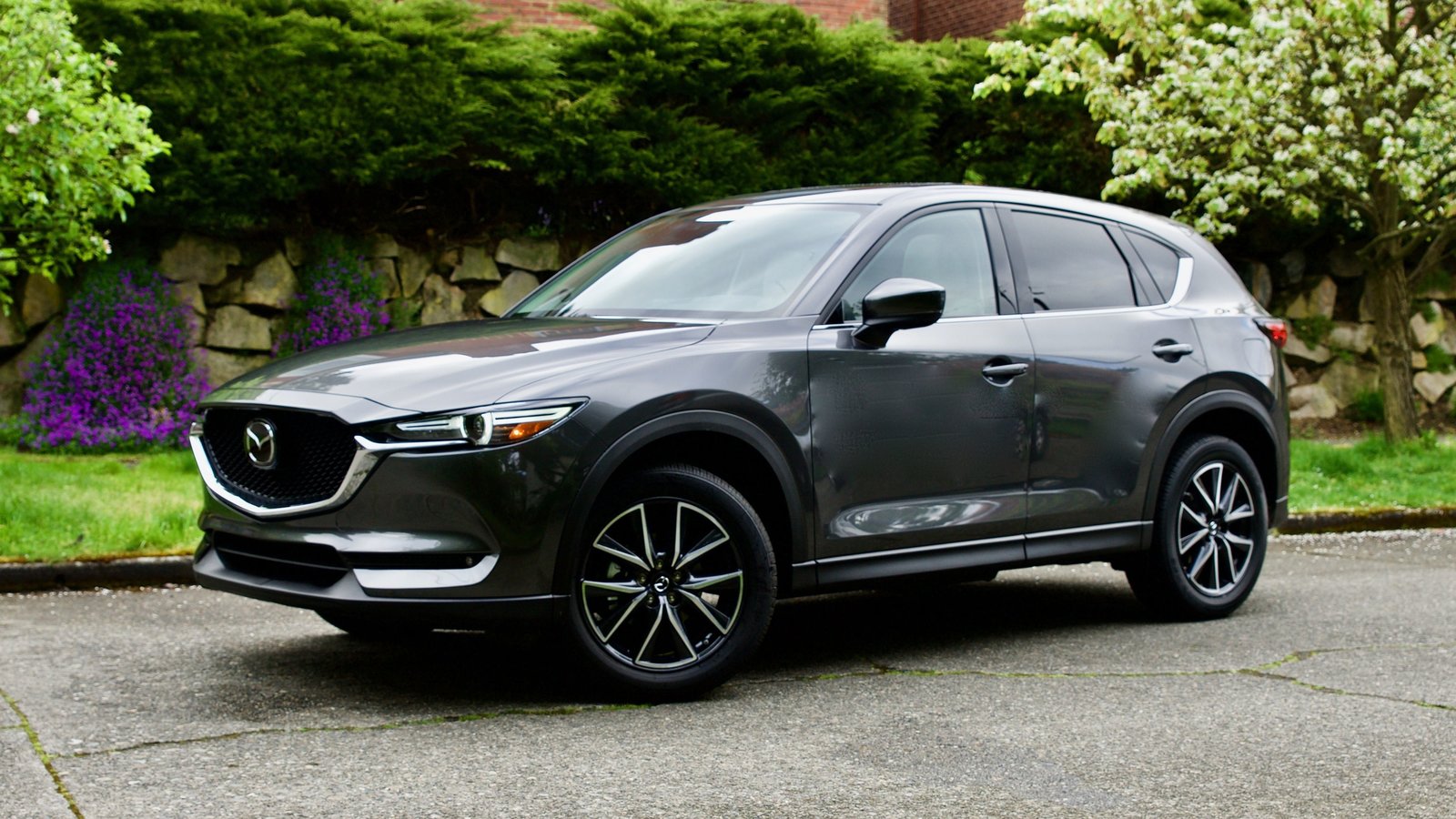
3. Mazda CX-5
Mazda may not sell in the same volumes as Toyota or Honda, but its attention to detail and engineering quality often exceeds expectations. The Mazda CX-5 is a standout in this regard — not just because of its dynamic handling and upscale interior, but because it consistently avoids the recall trap that ensnares many of its competitors.
This crossover represents Mazda’s design philosophy perfectly: refine what works, eliminate what doesn’t, and prioritize quality over flash.
The CX-5’s reliability can be attributed to Mazda’s conservative mechanical approach. While it has evolved steadily over the years, Mazda hasn’t rushed unproven technology into its vehicles. Instead, the CX-5 is powered by its naturally aspirated SkyActiv engines, known for efficiency, simplicity, and low failure rates.
Its transmission, chassis systems, and infotainment components are similarly restrained in design, offering a clean and reliable interface that rarely gives owners trouble. This “less is more” philosophy translates directly into fewer recalls.
Mazda also benefits from being an independent automaker that has retained complete control over its design and manufacturing processes. With tighter internal quality checks and less reliance on shared parts from third-party suppliers, Mazda reduces the chance of widespread defects.
When problems are discovered, they’re often caught in pre-production, not after tens of thousands of vehicles are on the road. This proactive quality assurance loop helps keep the CX-5 off the NHTSA recall bulletins that plague other compact SUVs.
CX-5 drivers routinely praise the SUV for being low-maintenance and predictable. Even after years of ownership, the systems feel tight and responsive, and the cabin materials don’t deteriorate prematurely. While Mazda may not have the name recognition of some rivals, it delivers where it counts, and a big part of that is its track record of avoiding the expensive and annoying disruption of recalls.

4. Lexus RX
The Lexus RX has long been the luxury SUV that quietly outlasts its rivals. It doesn’t scream for attention with gimmicky tech or experimental drivetrains. Instead, Lexus opts for refinement through reliability, and the result is a vehicle that not only pampers its occupants but also keeps them away from service bays.
The RX consistently ranks near the top of reliability studies, and its recall record is impressively sparse compared to other luxury models.
Much of this stems from Lexus’s status as Toyota’s premium brand. The RX shares many components with proven Toyota platforms, including its engines, electronics, and safety systems.
But Lexus adds another layer of precision in its manufacturing process, with tighter quality control, higher-end materials, and longer testing cycles before a new generation or feature is launched. This results in fewer surprises after production and fewer urgent fixes required once vehicles hit the road.
Lexus also tends to avoid bleeding-edge technology in favor of well-developed features. While some luxury brands introduce complex autonomous features or overcomplicated infotainment systems that generate headaches and recalls, Lexus takes a more measured approach.
The RX is luxurious, yes — but it’s also engineered for dependability. Its infotainment systems, while sometimes conservative in design, rarely fail. Its powertrain is polished and dependable, avoiding the recalls often associated with turbocharging or exotic engineering.
Owners love the RX not only for its plush interior and smooth ride, but for its utter lack of drama. They report years of service with virtually no issues beyond standard maintenance.
There are no recurring horror stories, no massive recalls disrupting daily life, and no sense of dread when opening a letter from the dealership. For many, that alone is worth the price of entry — luxury that’s not just about comfort, but about confidence in the vehicle itself.
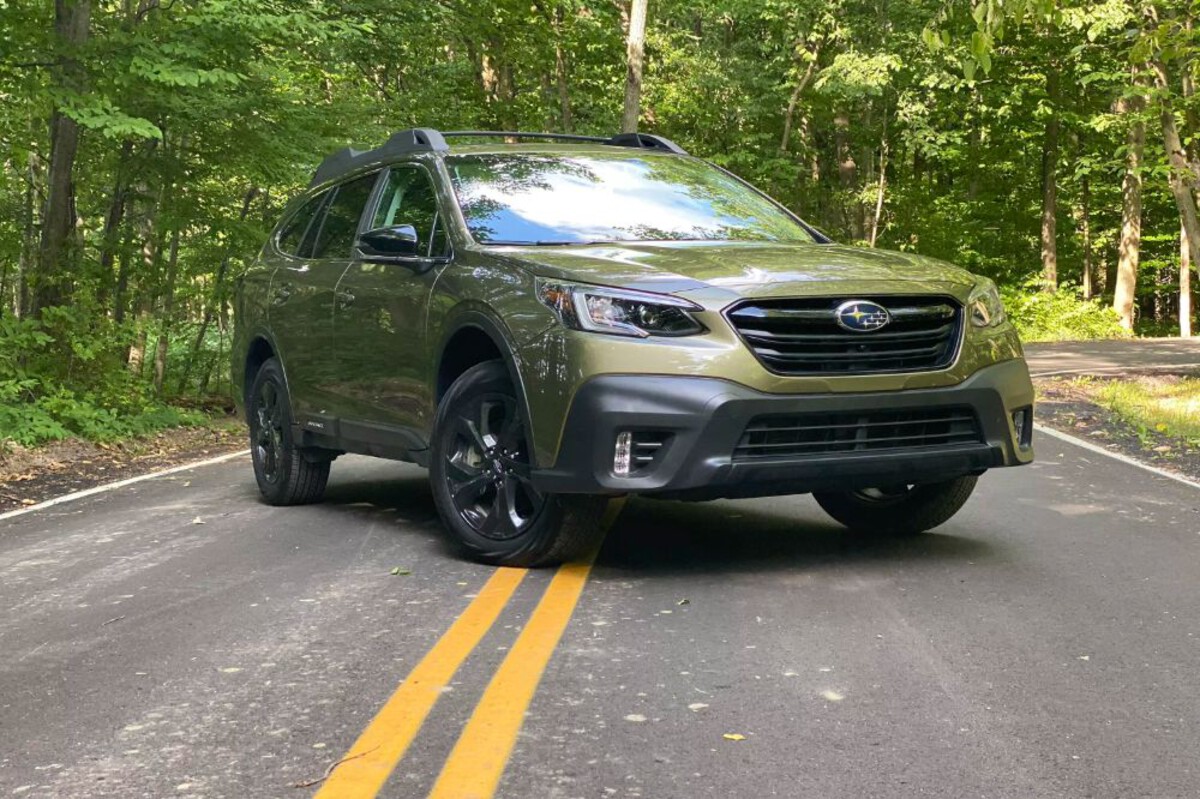
5. Subaru Outback
The Subaru Outback is beloved for its all-weather capability, practical layout, and rugged design — but what many overlook is just how few major recalls this wagon-like SUV faces.
Despite its niche positioning, the Outback has become a mainstay in North America’s family and outdoor-adventure markets, and much of that loyalty is built on the back of Subaru’s engineering focus: durable, safe, and predictable vehicles.
The Outback’s architecture is built with longevity in mind. Subaru’s symmetrical all-wheel drive system, for example, has seen incremental updates over the years, rather than drastic redesigns that could introduce new failure points.
The same can be said for its engines and CVTs, which are refined versions of long-running systems. Subaru tends to update cautiously, only introducing features once they’ve been vetted across several platforms. This conservative evolution helps prevent the kinds of mechanical and electronic issues that result in recalls.
Subaru also places a heavy emphasis on crash safety and structural integrity, using reinforced body shells and standardized safety systems across its lineup. The Outback is engineered to withstand abuse — whether it’s from rough roads, winter weather, or simply the wear and tear of family life.
Its components are more rugged than those in many competitors, which not only contributes to its durability but also to its track record of avoiding defects that lead to safety-related recalls.
Owners of the Outback often express high satisfaction not just for the car’s capability, but for its consistency. There are a few stories of dashboard lights going haywire or powertrain gremlins appearing out of nowhere. It’s a car designed for reliability under pressure, whether you’re trekking up a snowy mountain or sitting in city traffic.
The peace of mind that comes with an Outback is not just about traction or ground clearance — it’s knowing that you won’t be part of the next recall headline.
5 Cars That Are Always on the List

1. Ford Explorer
The Ford Explorer, one of America’s best-selling SUVs, has long promised rugged capability and family practicality. However, it’s also become synonymous with a consistent string of recalls that seem to follow every generation.
From drivetrain failures to electrical faults and even serious safety concerns, the Explorer’s production history is littered with red flags. In many cases, these recalls aren’t isolated — they represent systemic problems that appear across multiple model years and platforms, raising questions about Ford’s long-term quality control strategy.
One of the most persistent issues plaguing the Explorer is transmission and drivetrain reliability. Especially in the 2011–2019 models, owners frequently reported issues with gear slipping, rough shifting, and delayed engagement, many of which led to formal recalls or service bulletins.
These issues weren’t just nuisances; they affected drivability and safety. Even when Ford attempted to address the problems through updates or part replacements, new problems often emerged, creating a frustrating loop for consumers.
Compounding the issue is Ford’s rush-to-market culture in recent years. The 2020 redesign of the Explorer was ambitious, built on a new rear-wheel-drive platform meant to rejuvenate the brand.
But it launched with significant quality problems, including improper welds, detaching trim, loose suspension components, and major HVAC malfunctions.
Some dealers reportedly received vehicles that needed recall work before they could even be sold. When recalls are hitting vehicles before the customer even takes delivery, it’s a sign of deeper cracks in the production process.
The Ford Explorer remains popular because of its size, styling, and brand loyalty, but buyers often overlook its track record. Many consumers who purchase based on reputation alone are blindsided by the real-world reliability issues.
It’s a textbook case of a car that’s chronically “on the list” — not because of one bad year, but because of a long-standing pattern of insufficient testing, rushed releases, and a failure to learn from past mistakes.

2. Jeep Grand Cherokee
The Jeep Grand Cherokee is an iconic nameplate, synonymous with off-road luxury and adventure-ready capability. But behind the rugged façade lies a vehicle that’s frequently troubled by recalls.
From air suspension failures and electrical glitches to major drivetrain defects, the Grand Cherokee has consistently been among the most recalled SUVs in its class. Even in newer generations, reliability issues persist, which has made many long-term owners wary despite Jeep’s brand appeal.
One major problem has been Jeep’s overreliance on complex, unproven technologies. Air suspension systems, in particular, have caused numerous headaches, with owners reporting failures in cold weather, leaks, and expensive repairs.
Transmission calibration issues, rough shifting, and total failures have also been common, especially in models equipped with the ZF 8-speed automatic. While this transmission is praised when properly tuned, Jeep’s integration of it has been spotty, leading to both software recalls and hardware issues.
Software and electrical systems have also contributed heavily to the Grand Cherokee’s recall tally. Issues with Uconnect infotainment, erratic behavior in blind-spot detection, malfunctioning adaptive cruise control, and spontaneous power losses have been cited in various years.
Jeep’s use of increasingly complex electronic systems has outpaced its ability to ensure long-term stability. Owners often report systems freezing or restarting while driving, and some features simply stop working altogether after a few years.
What’s most disappointing about the Grand Cherokee’s recall history is that the vehicle has so much potential. It looks the part, drives well, and offers features that few midsize SUVs can match at its price point.
But the underlying build quality — especially in earlier generations and certain trims — continues to let it down. Jeep enthusiasts may tolerate these issues in the name of brand loyalty, but new buyers should proceed with caution. For all its capability, the Grand Cherokee remains a frequent flyer on recall lists.
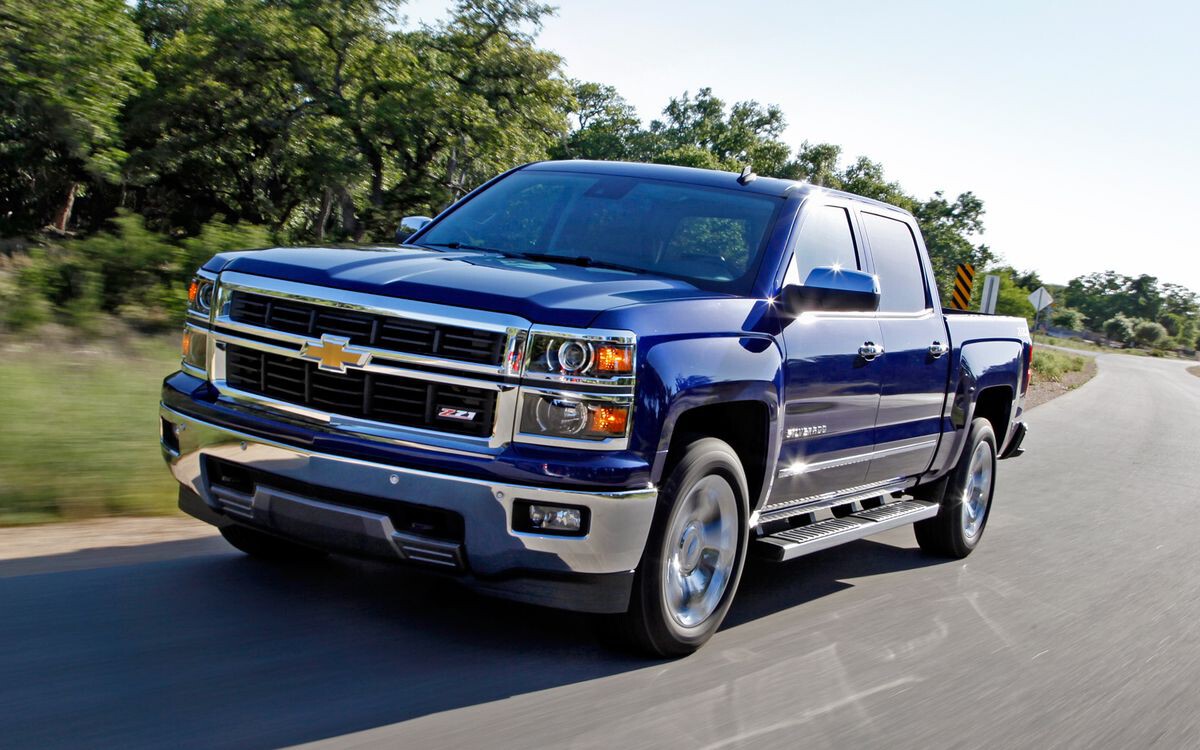
3. Chevrolet Silverado
The Chevrolet Silverado is one of the top-selling trucks in the United States and has earned a reputation for ruggedness and power. Yet, beneath that heavy-duty image is a history of recurring recalls that’s difficult to ignore.
Whether it’s brake system malfunctions, steering failures, electrical fires, or faulty seatbelts, the Silverado routinely finds itself on recall reports year after year. Despite its popularity, it hasn’t been able to shake these consistent quality issues.
A big part of the Silverado’s problem lies in GM’s scale and production complexity. With millions of units built across multiple factories, the likelihood of variation in parts quality, assembly consistency, and software calibration is much higher than in smaller-volume models.
These inconsistencies manifest as recalls affecting everything from electronic stability control to poorly installed components that fail prematurely.
The 2014–2018 generation, for example, was hit with numerous recalls related to power steering, ABS modules, and fire risks stemming from faulty fuel pumps and battery connections.
The 2019 redesign was supposed to fix these problems, but instead, it introduced new ones. Reports soon emerged of faulty brake boosters, fragile tailgate mechanisms, and infotainment units that would reboot during driving. This prompted additional recalls and owner frustration.
The Silverado’s newer models also faced backlash for initial build quality, with owners reporting paint defects, misaligned body panels, and even drivetrain shudders. Even though GM acts relatively quickly once defects are public, the sheer frequency of problems tarnishes the truck’s reputation.
Despite these setbacks, the Silverado remains a top seller due to brand loyalty and the vehicle’s core strengths. However, buyers who prioritize reliability and a trouble-free ownership experience may be surprised at how often the Silverado requires unplanned dealership visits.
Its blend of mass production, innovation, and corporate cost-cutting creates a perfect storm for recurring recall issues — one that has yet to be fully addressed, despite its iconic name.
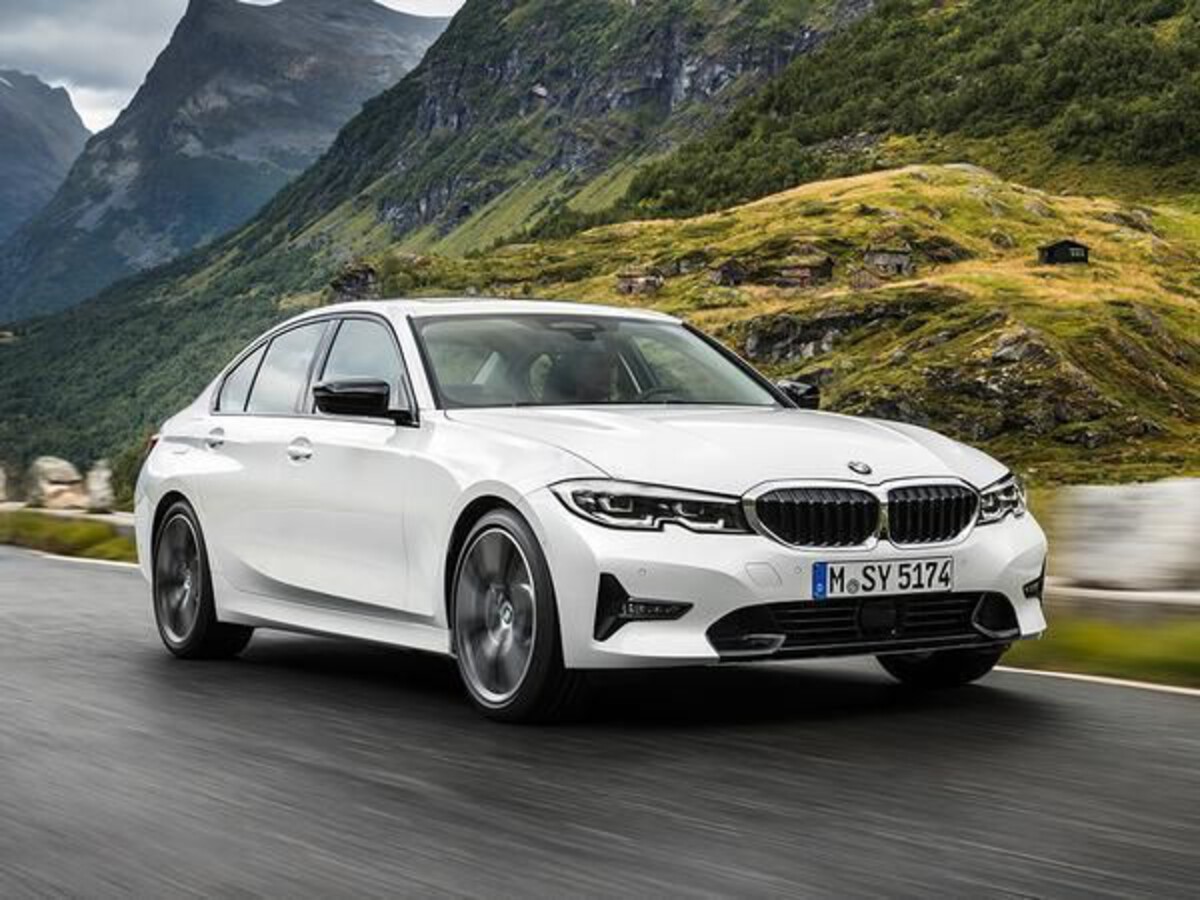
4. BMW 3 Series
The BMW 3 Series is one of the most celebrated sports sedans of all time — revered for its balance, dynamics, and prestige. However, behind that reputation lies a troubling reality: the 3 Series is no stranger to recalls.
From major fuel system problems to airbag defects and fragile electronics, this model often suffers from issues that undercut its engineering credibility. BMW’s aggressive pursuit of innovation sometimes comes at the cost of long-term durability.
One major contributing factor is BMW’s integration of advanced technology in nearly every corner of the car. The 3 Series is packed with electronics: drive-by-wire systems, adaptive suspension, digital instrument clusters, and high-end infotainment.
While these features are thrilling when they work, they also represent a higher risk for failure. Recalls involving instrument clusters going blank, faulty adaptive headlights, and malfunctioning driver assistance systems are not uncommon, particularly in the F30 (2012–2019) and early G20 (2019–present) generations.
Another recurring issue involves BMW’s fuel systems and emissions components. The high-pressure fuel pumps (HPFPs) and turbocharged engines in particular have caused headaches for years, with some models suffering from sudden loss of power or stalling.
These problems often result in formal recalls, but even outside the recall scope, owners deal with repeated visits to the dealership for repairs. The complexity of the powertrain also means that when things do go wrong, repairs are expensive and time-consuming.
To BMW’s credit, the company typically responds quickly and responsibly to identified defects. However, the sheer volume and diversity of recalls suggest that many issues could be avoided with a more conservative design or better quality assurance during development.
For many owners, especially those who lease short-term, the performance and luxury may outweigh the risks. But for long-term buyers, the 3 Series is often a gamble, and one that too frequently ends up on the recall list.
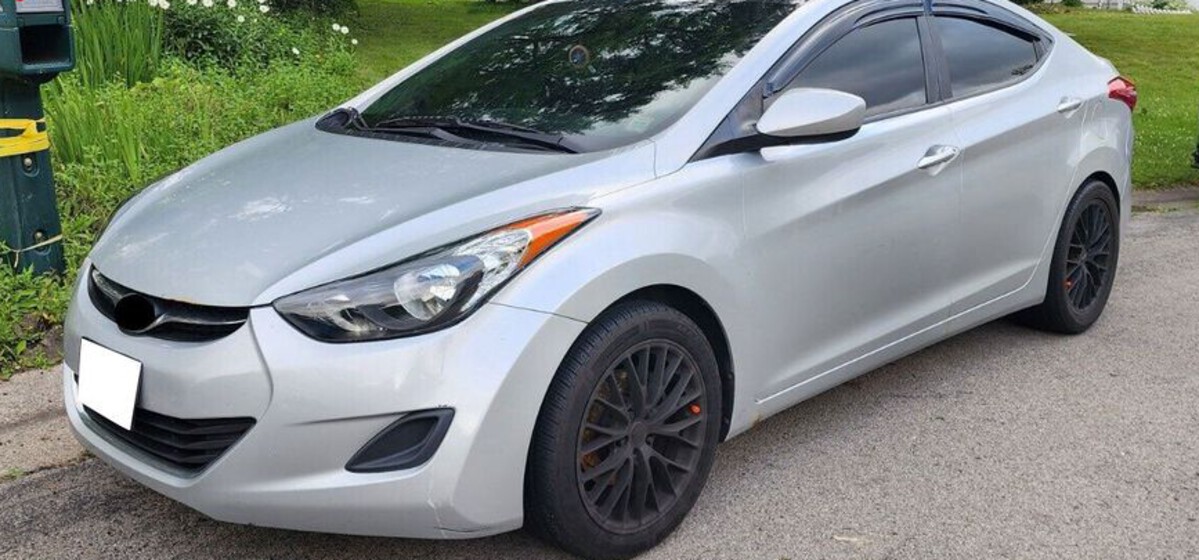
5. Hyundai Elantra (2011–2016)
The Hyundai Elantra saw a meteoric rise in popularity during the early 2010s, thanks to its sleek styling, affordable pricing, and generous warranty. But the aggressive pricing and fast-paced development that helped it gain market share also introduced a slew of quality control problems.
Between 2011 and 2016, the Elantra was plagued with numerous recalls — many of them involving serious safety concerns — and earned a reputation for being built to a price rather than a standard.
One of the most concerning areas was airbag reliability. Multiple recalls were issued for malfunctioning sensors and defective inflators that could either fail to deploy or deploy incorrectly during collisions. This posed a serious risk, especially considering the Elantra’s positioning as a value-oriented compact often chosen by families and young drivers.
Electrical system issues were also frequent, with problems like dashboard warning lights illuminating for no reason, sudden power loss, and malfunctioning headlights or brake lights.
The suspension system was another weak point. Many 2011–2013 models suffered from rear suspension components that would corrode prematurely or even fracture under certain conditions. This led to recalls and, in some cases, NHTSA investigations.
Owners in northern climates were particularly vulnerable, where road salt accelerated wear and exposed underlying material weaknesses. Engine defects, including stalling, knocking, and oil consumption problems, also contributed to a long list of complaints.
To its credit, Hyundai has made noticeable strides since then in improving vehicle quality and corporate accountability. Later generations of the Elantra are far more refined and reliable, but the 2011–2016 range remains a cautionary tale.
Also Read: 5 Engines That Never Burn Coolant and 5 That Always Need Top-Ups
The landscape of automotive recalls is a complex reflection of modern vehicle design, manufacturing, and corporate responsibility.
Throughout this article, we’ve journeyed through two distinct groups of vehicles — those that manage to stay mostly clear of the dreaded recall bulletins, and those that, despite their popularity or prestige, seem perpetually entangled in them.
This contrast is more than a matter of chance; it is rooted in fundamental differences in engineering philosophy, quality control rigor, corporate culture, and how manufacturers respond to the inevitable challenges of mass production.
Cars that avoid annoying recalls typically share several core traits. They are often built on platforms honed through years of incremental refinement rather than radical reinvention.
Their manufacturers tend to invest heavily in pre-production durability testing, allowing them to detect and correct defects before vehicles leave the factory floor.
These brands prioritize reliability over flashy features or untested technology, understanding that many consumers value peace of mind above all else.
Furthermore, their quality control standards are strict and consistent, ensuring each vehicle adheres to tight tolerances and materials meet high durability criteria.
As a result, owners enjoy more time on the road and less time in the repair shop — a benefit that translates to better resale values, lower ownership costs, and greater brand loyalty.
Conversely, vehicles frequently caught on recall lists often share the opposite traits. They may incorporate complex and sometimes unproven technology early, driven by the race to offer the latest features or meet regulatory pressures.
The integration of numerous electronic systems, advanced driver aids, and turbocharged powertrains increases the potential for software bugs, hardware failures, and manufacturing inconsistencies.
In some cases, pressure to accelerate production schedules leads to insufficient testing or oversight, resulting in defects slipping through to customers. Supplier challenges and globalized supply chains can further complicate quality control, introducing variability and risk.
The impact on owners can be significant — repeated recalls mean lost time, inconvenience, and sometimes safety risks that undermine trust in the vehicle and the brand.
However, the recall story is not static. Many automakers have recognized these challenges and are improving their approaches. Advances in simulation technology, more rigorous validation processes, and closer supplier partnerships help reduce the frequency and severity of recalls.
Additionally, the industry’s shift towards electrification and software-defined vehicles brings both new risks and new opportunities to enhance reliability through over-the-air updates and more integrated diagnostics.
For consumers, understanding the recall history of a vehicle is an essential part of informed buying. It is not merely about avoiding inconvenience, but about choosing a car that will protect safety, provide value, and deliver consistent performance over the years of use.
Consulting recall databases, reliability reports, and owner feedback can reveal patterns that single model years or slick advertising campaigns may conceal.
For manufacturers, the imperative is clear: build quality and durability cannot be an afterthought. The cost of recalls extends beyond financial impact — it damages brand reputation and customer relationships.
Investing in robust design, stringent quality assurance, and transparent recall communication strengthens consumer confidence and can turn a vehicle into a trusted companion for years, rather than a source of frustration.
Ultimately, the vehicles that avoid annoying recalls and those that are always on the list offer a lens into the evolving dynamics of automotive engineering and consumer expectations. They remind us that behind every car is a story of decisions — about what to prioritize, what risks to take, and how much trust to earn.
As automotive technology advances and consumer demands evolve, this balance will remain at the heart of what makes a car not just desirable, but dependable.
In your automotive journey, whether you lean towards the tried-and-true or are tempted by innovation, keeping recall history in mind is a wise strategy.
It empowers you to choose vehicles that fit not just your lifestyle, but your peace of mind. Because in the end, a car that avoids annoying recalls is not just a machine — it’s a promise of reliability, safety, and confidence on the road ahead.
